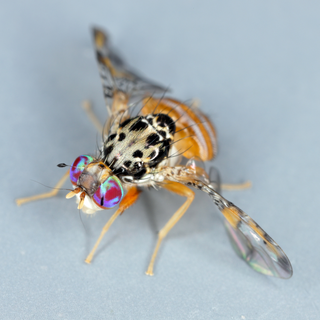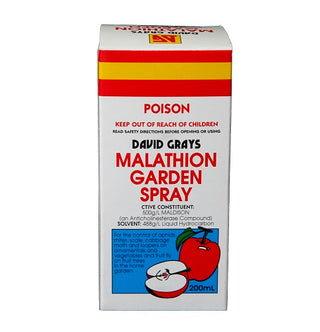Latin name: Ceratitis capitata
Fruit flies (family Tephritidae) attack a wide range of fruits and vegetables. In Western Australia (WA), Mediterranean fruit fly (Medfly, Ceratitis capitata) is a major problem for commercial orchardists and householders alike and attacks a wide range of fruits, vegetables and nuts.
This page describes the characterisitics and distribution of the Medfly.
Distribution
Medfly is thought to originate in Africa and is now endemic to WA. It was discovered in Claremont in 1895 and is found from Esperance through to Carnarvon. It is present in Broome and Derby, but absent from the Ord River Irrigation Area (ORIA, Kununurra). The main area of infestation extends from Perth through to Bunbury.
Behaviour
Medfly activity is dependent on temperature. One life cycle takes 28-34 days to complete in summer and 60-115 days in winter. Fly activity and numbers are greatest during warmer months. Adult Medflies become active when temperatures exceed 12°C. As the temperature rises in spring, increased numbers of adults emerge from the ground and flies become active. If control is not started at this time, Medfly populations will grow and cause problems later in the season.
When temperatures start to fall Medfly can still survive for extended periods as eggs or larvae in fruit, or as pupae in the ground.
Adult Medfly may live for two to three months and are often found in the foliage of fruit trees, especially citrus. As long as fruit is present, most Medfly will not move more than 50 metres. The males form groups underneath leaves and call for females to mate.
After mating, females search for a suitable ripe fruit. Suitable ripe fruits include, but are not limited to, mangos, citrus, grapes and stone fruit. When Medfly numbers are high and competitions is great, or if less favoured fruits are available, females may infest unripe fruits or less preferred fruits such as olives and capsicums. Female Medfly also infest less preferred hosts if preferred hosts are not available, even when populations are low.
Once a suitable host is found, the female’s ovipositor (egg laying organ) is used to make a hole (sting) in the fruit skin and deposits up to 300 eggs. Eggs laid in unripe fruit may hatch as the fruit ripens.
SOLUTIONS:
- Exclusion: Insect Netting
- Baiting: Malathion Garden Spray, lure and Insect Glue Traps
Reference: Mediterranean fruit fly life cycle & biology | Agriculture and Food


